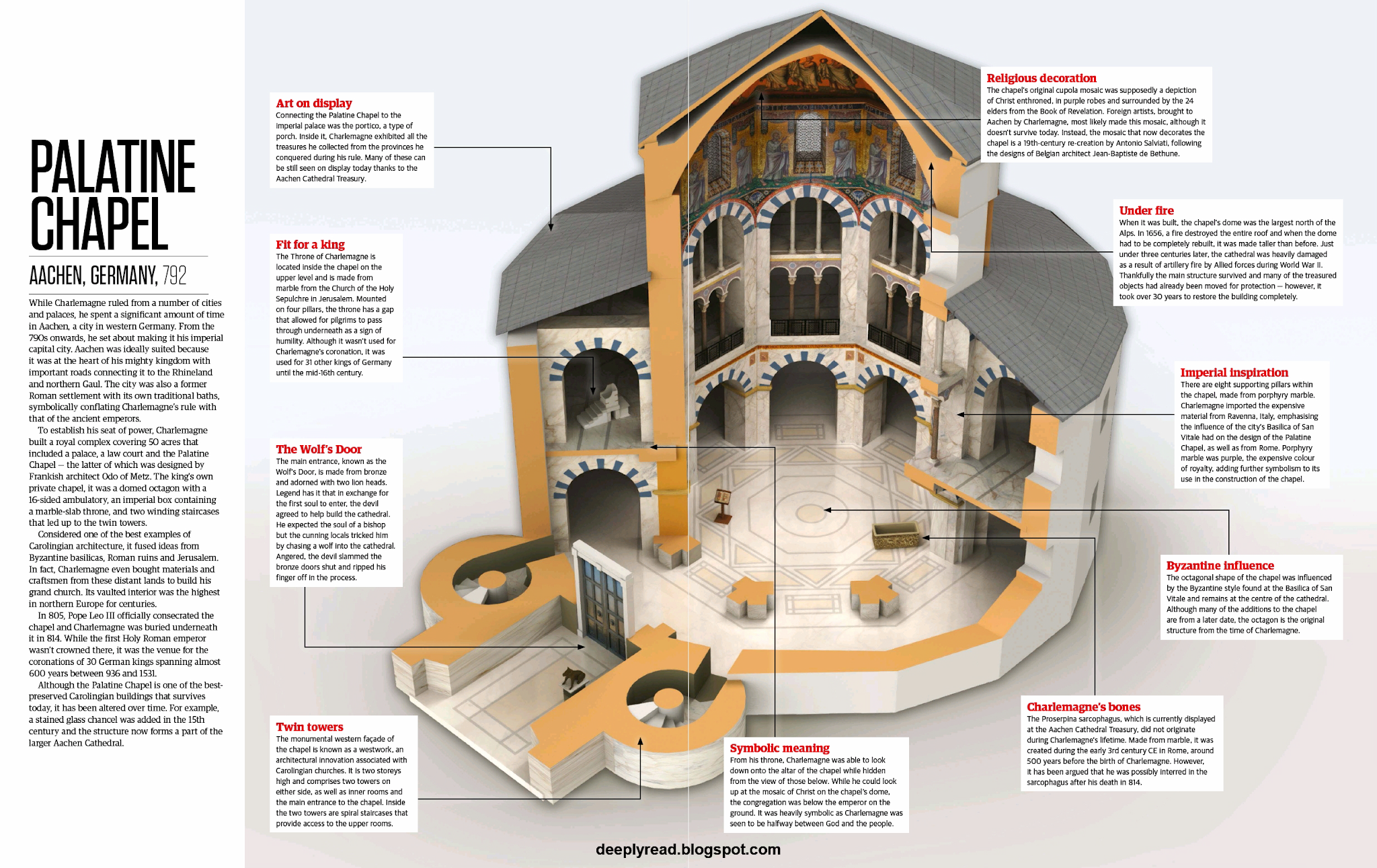While Charlemagne ruled from a number of Cities and palaces, he spent a significant amount of time in Aachen, a city in western Germany. Fran the 790s onwards, he set about making It his imperial capital city. Aachen was Ideally suited because it was at the heart of his mighty kingdom with important roads connecting It to the Rhineland and northern Gaul. The city was also a former Roman settlement with its own traditional baths, symbolically conflating Charlemagne's rule with that of the ancient emperors.

To establish his seat of power, Charlemagne built a royal complex covering 50 aces that Included a palace, a law court and the Palatine Chapel — the latter of which was designed by Frankish architect Odo of Metz. The king's own private chapel, it was a domed octagon with a 16-sided ambulatory. an imperial be containing a marble-slab throne, and two winding staircases that led up to the twin towers.
Considered one of the best examples of Carolingian arthitecture, it fused ideas hum Byzantine basilicas. Roman ruins and Jerusalem. In fact. Charlemagne even bought materials and aaftsmen from these distant lands to build his Wand Church. Its vaulted Interior was the highest in northern Europe for centuries.
In 805, Ripe Leo 111 officially consecrated the chapel and Charlemagne was burled underneath It In 814. while the first Holy Roman emperor wasn't nonmed there, it was the venue for the coronations of 30 German kings spanning almost 600 years between 936 and 1531.
Although the Palatine Chapel is one of the best-preserved Carolingian buildings that survives today. It has been altered over time. For example. a stained glass chancel was added in the 15th century and the structure new forms a part of the larger Aachen Cathedral.